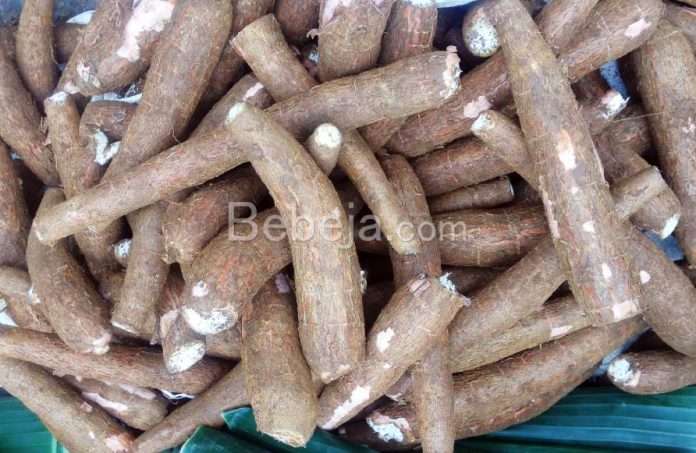Mocaf or modified cassava flour is obtained by processing cassava into flour. The flour is made free from the flavor and taste of cassava by fermenting it for 8-10 hours using lactic acid bacteria. The fermentation with lactic acid bacteria destroys the cellulose in the cassava, resulting in a fine-textured flour. The fermentation technology was developed by Dr Achmad Subagio of Jember University in East Java.
All types of cassava can be processed into mocaf, especially cassava tubers harvested at the age of 8-12 months. It has to do with the yield. The best cassava has low cyanide acid, less than 1%. Cyanide acid is easily lost during fermentation. Cyanide in cassava causes a bitter cassava taste. The best mocaf has a pure white color and is usually produced from cassava without black spots.
Processing cassava into mocaf is not difficult. The cassava must be thoroughly washed and then sliced into 1.5-2 mm thick slices. Next, the cassava is placed in a container. Containers can be sacks or plastic bags. When soaking cassava in a bacterial solution during a fermentation process, it is important to ensure good circulation. Therefore, if plastic containers are used, punch holes in all plastic with nails to ensure good circulation.
The fermentation process lasts 8-10 hours. The process ends when the cassava is placed in a solution of salt and lime for 10-15 minutes before being dried and ground. The ground flour is then sifted through a mesh of at least 80 mesh.
Mocaf production in Indonesia is growing rapidly, especially in cassava-producing areas. A mocaf flour mill in Banjarnegara, Central Java, is capable of producing 100 tons of flour per month for export to the Middle East and Turkey. In Wonogiri, a mocaf flour mill with a capacity of 91,000 tons per year is being developed. The production uses Lactobacillus plantarum bacteria with a fermentation time of 120 hours.
